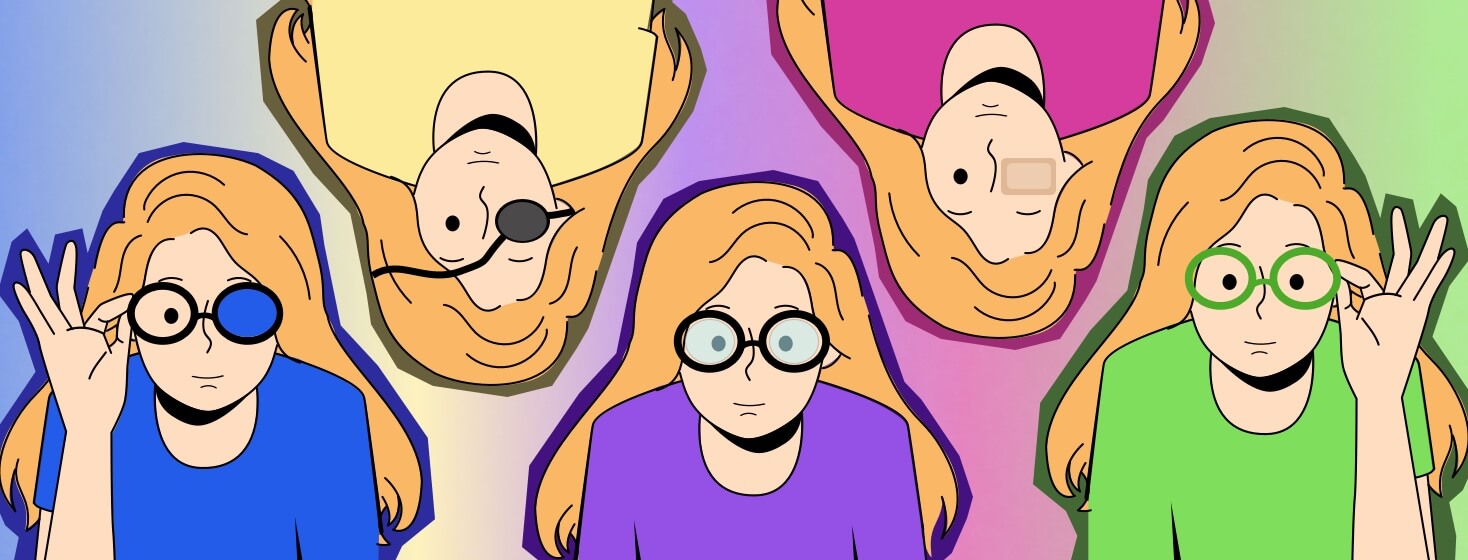How Glasses Helped Me with TED (Part 2)
Editor's Note: This is part 2 of a series. Please read part 1 here.
"Do you wear glasses?" my friend asked me. She was on the phone with her then-boyfriend (now husband), who once worked at an ophthalmologist’s office.
"I have glasses," I said. "I don’t wear them often, though."
"She has glasses, yes," she tells her boyfriend.
We are sitting in her car at the mall. Earlier that morning, I woke up with double vision. She was on the phone with him trying to see if he had any advice on what I could do for the double vision. I sat in the passenger seat, trying to read something on my phone to see if the text would split into two.
"He says you should put tape or something on your glasses so when you have double vision, you will still be able to see."
I tried to imagine putting tape on the glasses I had but had not used for years. The image seemed so foreign to me. I locked my phone and stared out the window, wondering how crazy that would look.
This or That
Do you wear glasses?
Eyepatches and prisms: How glasses helped me with my thyroid eye disease
Helped with double vision
A week later, I was at an eye doctor's office I had never been to before being told I should get a prism engraved in my glasses. When I indicated to him that I was not sure of his suggestion, he wrote me a prescription and said I could try a stick-on prism to put on my glasses lens.
The stick-on prism worked, but only for so long. By the end of the day, my double vision would come creeping back in, disrupting my evenings and making me feel frustrated. I could not read or watch anything. I began looking up eyepatches to put over one lens to allow me to stay up longer and continue on with my night without feeling down about my eyes. I ordered a pack of eye patches in a variety of sizes from Amazon.
I looked as crazy as I imagined I would with this eye patch on but it did the trick. With one eye, I could see normally. I was not going to allow my tired eyes to dictate when I would and wouldn’t go to sleep or what I could or couldn’t do.
Provided protection for my eyes
With the prisms and the eyepatches, my glasses helped me with my thyroid eye disease (TED) in more ways than I could have imagined. It was a barrier between me and my itchy eyes. A way to see out into my reality while my eyes were constantly shifting and transforming. The blue light protection in the lens helped me look at screens without worrying about damaging my eyes.
Changed the way I viewed myself
Wearing glasses also helped me not focus on how my eyes were changing in appearance. My eyes looked all sorts of ways during my TED journey. Wearing glasses all-day helped me not obsess over how different my eyes looked or how much I wished they would go back to how they were.
Continuing to wear glasses
My vision went through all sorts of changes, especially when I was put on steroids. I had to get a stronger prescription put into my lenses to help with all of the changes. When my TED symptoms began to fade from my life and I no longer needed a strong pair of lenses, I got a new pair of glasses with a prescription similar to what it was pre-TED. I felt hope knowing that at least some things would go back to normal.
I still wear glasses every day. A rounded green pair inspired by the ones Gregory Peck wore in the film adaption of To Kill A Mocking Bird. They fit my face quite well. I cannot remember what it was like not wearing glasses every day.
Do you have a thyroid eye disease (TED) story? Click the button below to share with our community!

Join the conversation